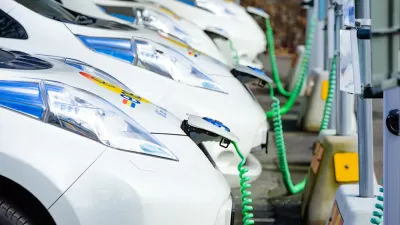Burj Dubai (now renamed as the Burj Khalifa), the world's tallest building, opened today in Dubai. But with the recent credit crunch and economic recession, the extravagant monument to boom times sits mostly empty.
The building was recently renamed the Burj Khalifa after the ruler of neighboring Abu Dhabi, which has come to Dubai's rescue during tough economic times.
"Designed by Adrian Smith, a former partner in the Chicago office of Skidmore, Owings & Merrill, the Burj Dubai is an impossible-to-miss sign of the degree to which architectural ambition -- at least the kind that can be measured in feet or number of stories -- has migrated in recent years from North America and Europe to Asia and the Middle East. It is roughly as tall as the World Trade Center towers piled one atop the other. Its closest competition is Toronto's CN Tower, which is not really a building at all, holding only satellites and observation decks, and is in any case nearly 900 feet shorter.
Monday's ribbon-cutting, though, could hardly come at a more awkward time. Dubai, the most populous member of the United Arab Emirates, continues to deal with a massive real estate collapse that has sent shock waves through financial markets around the world and forced the ambitious city-state, in a significant blow to its pride, to seek repeated billion-dollar bailouts from neighboring Abu Dhabi. Conceived at the height of local optimism about Dubai's place in the region and the world, this seemingly endless bean-stock tower, which holds an Armani Hotel on its lower floors with apartments and offices above, has flooded Dubai with a good deal more residential and commercial space than the market can possibly bear."
Christopher Hawthorne of the Los Angeles Times reports that the building remains mostly vacant. And despite the fact that its 900 apartments have been bought, most of them were bought as investments years ago during more prosperous times. His essay also looks at emptiness in architecture, a concept Americans are having a tough time wrapping their heads around.
FULL STORY: The Burj Dubai and architecture's vacant stare

Maui's Vacation Rental Debate Turns Ugly
Verbal attacks, misinformation campaigns and fistfights plague a high-stakes debate to convert thousands of vacation rentals into long-term housing.

Planetizen Federal Action Tracker
A weekly monitor of how Trump’s orders and actions are impacting planners and planning in America.

In Urban Planning, AI Prompting Could be the New Design Thinking
Creativity has long been key to great urban design. What if we see AI as our new creative partner?

King County Supportive Housing Program Offers Hope for Unhoused Residents
The county is taking a ‘Housing First’ approach that prioritizes getting people into housing, then offering wraparound supportive services.

Researchers Use AI to Get Clearer Picture of US Housing
Analysts are using artificial intelligence to supercharge their research by allowing them to comb through data faster. Though these AI tools can be error prone, they save time and housing researchers are optimistic about the future.

Making Shared Micromobility More Inclusive
Cities and shared mobility system operators can do more to include people with disabilities in planning and operations, per a new report.
Urban Design for Planners 1: Software Tools
This six-course series explores essential urban design concepts using open source software and equips planners with the tools they need to participate fully in the urban design process.
Planning for Universal Design
Learn the tools for implementing Universal Design in planning regulations.
planning NEXT
Appalachian Highlands Housing Partners
Mpact (founded as Rail~Volution)
City of Camden Redevelopment Agency
City of Astoria
City of Portland
City of Laramie




























